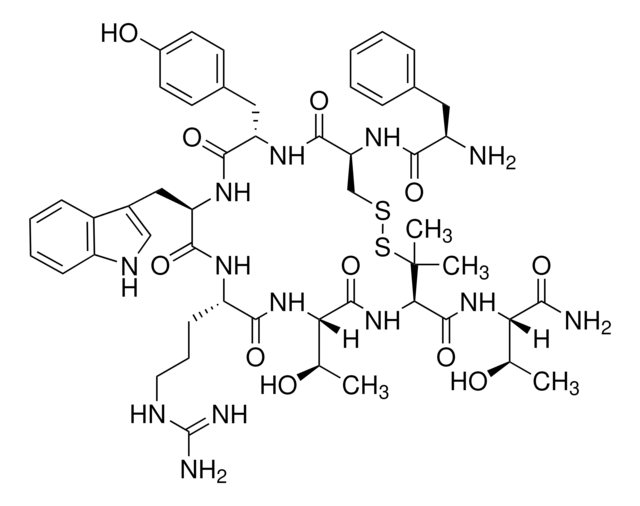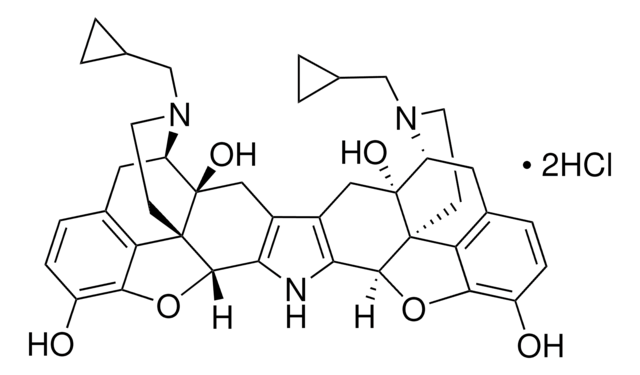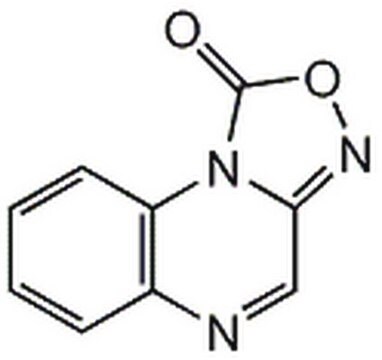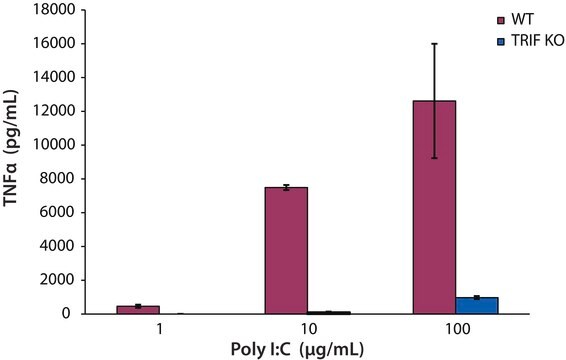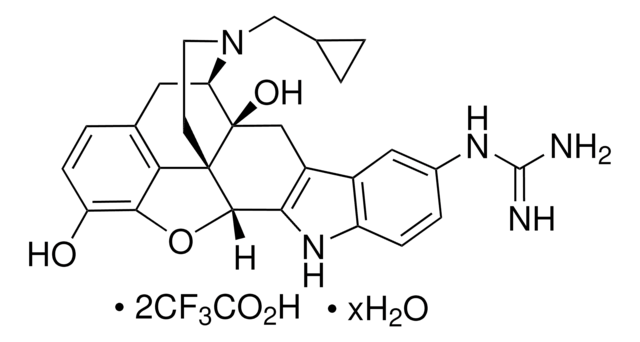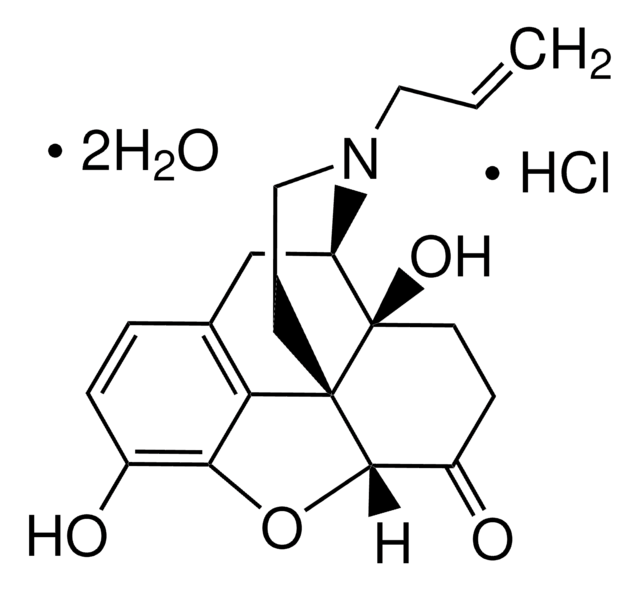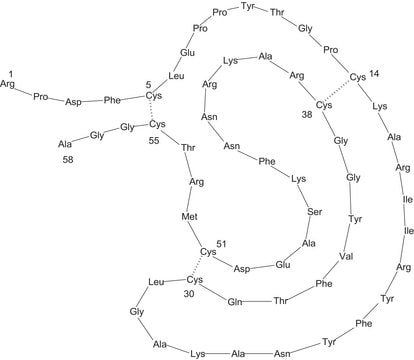P5296
CTOP
≥97% (HPLC)
About This Item
Prodotti consigliati
Saggio
≥97% (HPLC)
Forma fisica
powder
N° accesso UniProt
Temperatura di conservazione
−20°C
Stringa SMILE
C[C@@H](O)[C@H](NC(=O)[C@H]1NC(=O)[C@@H](NC(=O)[C@H](CCCN)NC(=O)[C@@H](Cc2c[nH]c3ccccc23)NC(=O)[C@H](Cc4ccc(O)cc4)NC(=O)[C@H](CSSC1(C)C)NC(=O)[C@H](N)Cc5ccccc5)[C@@H](C)O)C(N)=O
InChI
1S/C50H67N11O11S2/c1-26(62)39(42(53)65)59-49(72)41-50(3,4)74-73-25-38(58-43(66)33(52)21-28-11-6-5-7-12-28)47(70)56-36(22-29-16-18-31(64)19-17-29)45(68)57-37(23-30-24-54-34-14-9-8-13-32(30)34)46(69)55-35(15-10-20-51)44(67)60-40(27(2)63)48(71)61-41/h5-9,11-14,16-19,24,26-27,33,35-41,54,62-64H,10,15,20-23,25,51-52H2,1-4H3,(H2,53,65)(H,55,69)(H,56,70)(H,57,68)(H,58,66)(H,59,72)(H,60,67)(H,61,71)/t26-,27-,33-,35+,36+,37-,38+,39+,40+,41-/m1/s1
PZWWYAHWHHNCHO-FGHAYEPSSA-N
Informazioni sul gene
mouse ... Pnoc(18155)
Amino Acid Sequence
Descrizione generale
Applicazioni
- to study the anxiogenic effects induced by CTOP in mice and rat.
- to study the effect of μ-opioid antagonist, CTOP on the bovine milk-derived LF (BLF)-induced analgesia.
- to determine whether μ-opioid receptors act cooperatively with 5-hydroxytryptamine (5-HT1A) receptors to regulate the behaviors generated in the elevated T-maze (ETM).
Azioni biochim/fisiol
Linkage
Codice della classe di stoccaggio
11 - Combustible Solids
Classe di pericolosità dell'acqua (WGK)
WGK 3
Punto d’infiammabilità (°F)
Not applicable
Punto d’infiammabilità (°C)
Not applicable
Dispositivi di protezione individuale
Eyeshields, Gloves, type N95 (US)
Certificati d'analisi (COA)
Cerca il Certificati d'analisi (COA) digitando il numero di lotto/batch corrispondente. I numeri di lotto o di batch sono stampati sull'etichetta dei prodotti dopo la parola ‘Lotto’ o ‘Batch’.
Possiedi già questo prodotto?
I documenti relativi ai prodotti acquistati recentemente sono disponibili nell’Archivio dei documenti.
I clienti hanno visto anche
Il team dei nostri ricercatori vanta grande esperienza in tutte le aree della ricerca quali Life Science, scienza dei materiali, sintesi chimica, cromatografia, discipline analitiche, ecc..
Contatta l'Assistenza Tecnica.